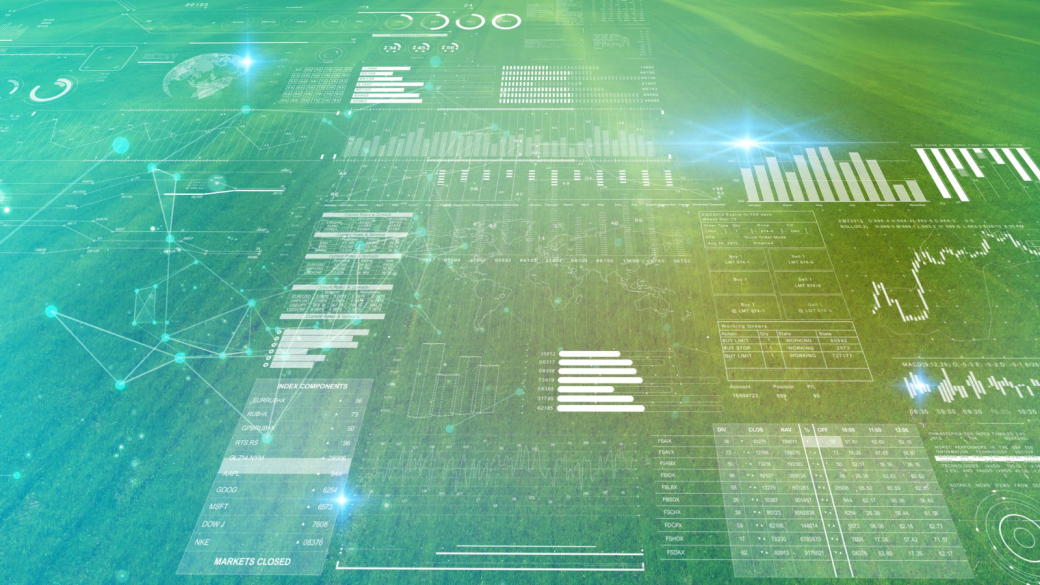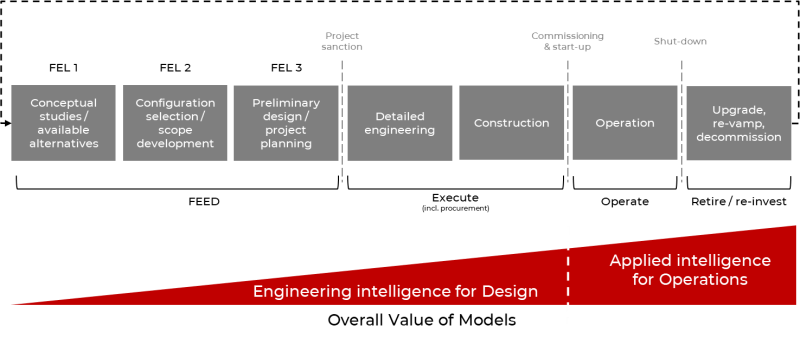Use AI to automatically keep your digital twin models up-to-date to meet your production plans.
Find out more
Among numerous emerging technologies in the process industries today, the digital twin is by far the most powerful and disruptive. Why? Because it constitutes a very rich way in which to look at the past, present and future of an asset. “Digital twin” is a new way of describing certain characteristics of technologies, some of which aren’t new, but for which there are a lot of exciting new innovations. As a result, the concept is rapidly evolving – as are perceptions – and so understandably there are a lot of sceptics.
A digital twin is a virtual, digital copy of a device, system, human or process that accurately mimics actual performance in real-time, is executable and can be manipulated and allows a better future to be developed. The “allows a better future to be developed” part is absolutely critical and should not be overlooked. It means a digital twin has to be predictive in nature and constitute an advanced analytical and decision support tool. It’s not just a system of record, where model number, serial number, manufacturer, maintenance history, etc. are captured. Instead, digital twins draw on data from these types of sources to create comprehensive situational awareness of the “here and now”, off which robust forward predictions can be made.

In Engineering, these sources might include, for example, engineering information systems, data warehouses or document management systems. As capital projects transition from Engineering into Operations, it’s critical that models created from these sources continue to be leveraged, as well as be augmented by other sources in Operations, such as hard and soft sensors. In this way, the digital twin consumes data from multiple sources to tell a richer story – past, present and future – about the asset throughout its lifecycle. The digital twin enables the transfer of “designed intelligence” from Engineering phases of capital projects into “applied intelligence” to be leveraged in Operations. In doing so, allowing project developers and operators to optimize the total cost and ownership value of the models which draw on these various data sources.
For these reasons, ideally the digital twin starts being created during the initial study to evaluate the feasibility of the asset and validate the licensors work. It is then used and further developed during the design, construction and commissioning of the asset. It facilitates the optimum design of the asset and the training of the staff who will operate the asset. It works in the present, mirroring the actual asset in simulated mode, but with full knowledge of its historical performance and accurate understanding of its future potential.
Understandably many people think of a digital twin as a 3D CAD model. This is probably because it is more easily visualized and quite tangible. However, the scope of the digital twin is expanding rapidly. By extending beyond the 3D CAD model to incorporate engineering and operating data, the digital twin is able to represent increasingly greater dimensions of the asset or business in terms of past, present and future. As a result, the digital twin concept is encapsulating a broader set of dynamic but intangible interactions occurring within/around the physical asset, such as fluid flow, heat and material balances, yield and energy inputs/outputs, thermodynamics, human operator behaviors, etc. These interactions are critical for asset performance management and maintaining facilities within optimum integrity operating windows for safety, reliability and profitability reasons.
Unfortunately, some assets were built as far back as the 1970s and therefore many facilities do not have the benefit of starting from scratch to sequentially apply their accumulated engineering intelligence from Design to applied intelligence in Operations. So where should the starting point for them be? The answer is undoubtedly where it makes most money. This involves assessing different areas to see what models already exist, can they be operationalized with real-time data, what will the associated cost be to do this, and what value will be derived in return?
The hydrocarbon processing industry makes its money through molecule management and manipulation of related inside-pipe conditions. These factors drive asset management and maintenance practices. Therefore, it makes most sense to start with the digital twin that delivers deep insights into molecule transformation mechanisms and process operating conditions, whilst also keeping the asset running within integrity operating windows to prevent asset failure. The solution involves operationalizing a single Integrated Asset Model (IAM) as an online digital twin to be used for production management, asset performance management and supply chain optimization:
For these reasons, assets could have a multitude of digital twins existing across the traditional ISA95 Purdue Model architecture and further afield within the organization. As they are increasingly integrated and connected, the scope and scale of these “twins” will grow and their transformative effect will amplify. The more expansive and integrated the digital twin becomes, the larger the territory it encompasses. Digital twins are now emulating centralized engineering hubs, remote operations centers and integrated production centers.
We must remember that digital twins are a means to an end, not the end itself. The end has not changed. Industry must continue to strive for business outcomes in terms of operation with no safety incidents, no unplanned outages, rigorous adherence to operating plans, nimble response to changes and disturbances, a motivated and informed workforce and a culture of profitability. A digital twin, as a part of digitalization efforts and digital transformation strategies is simply a vehicle to achieve superior results in these areas - and to achieve them in a sustainable manner.